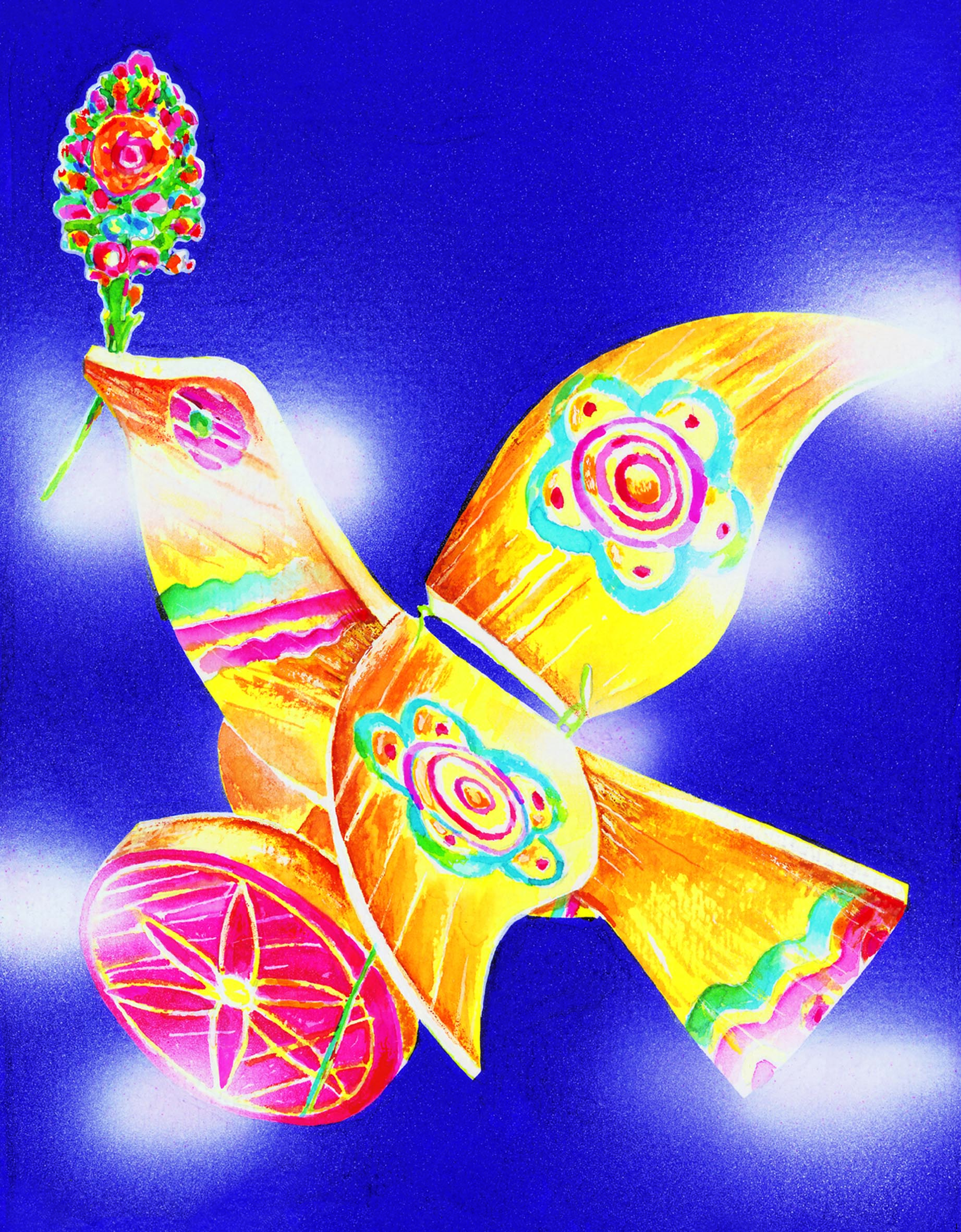
Programme and Artistic Bureau of Beskidy Highlanders’ Week of Culture
1st Maja Street no 8
43-300 Bielsko-Biala
Phone: +48-513-123-389; +48-33-812-52-76,
e-mail: biuro@tkb.art.pl
www.tkb.art.pl
Programme and Artistic Director of the Beskidy Highlanders’ Week of Culture: Magdalena Koim
Art and Programme Bureau of the Beskidy Highlanders’ Week of Culture:
- develops and publishes regulations of the Beskidy Highlanders’ Week of Culture, International Folk Meetings and Festival of Polish Highlanders Folklore,
- qualifies, in accordance with established regulations, domestic and foreign ensembles to participate in the event,
- develops a programme of all the concerts taking place during the Beskidy Highlanders’ Week of Culture,
- draws up the schedules of stay and concerts for each ensemble participating in the Beskidy Highlanders’ Week of Culture,
- coordinates the implementation of a programme of concerts during the Beskidy Highlanders’ Week of Culture,
issues advertising information and materials (brochures, invitations, posters, etc.).
Main festival towns
Wisła
The festival started right here in 1964. It is a joyful festive time not only for the local people, but also for many tourists. It is always noisy around Stanisław Hadyna Amphitheatre; the main promenade is lively, and Hoff Square is full of people. You can listen to Polish and foreign bands here before the noon. The festival in Wisła starts with the procession of groups. The atmosphere in the amphitheatre in the evening is unique, when the ensembles present their colourful shows.
Szczyrk
It has been inviting you to concerts since 1966. On the first Sunday of the festival, a colourful procession goes along Beskidzka Street to Skalite Amphitheatre. It attracts local residents, visitors from neighbouring towns and villages, and tourists. They follow the sound of folk instruments, watch spectacular costumes and dance shows. In Święty Jakub Square, where the bands perform, the viewers can relax listening to the source music.
Żywiec
Żywiec joined the festival organisation in 1975. You can feel the energy which flows from the stage in Pod Grojcem Amphitheatre, when Polish and foreign ensembles perform their shows. The Folk Art Fair is organised in the main square. Moreover, as part of the Festival of Polish Highlanders’ Folklore, a competition for bands, soloists, instrumentalists, singers, and masters with students takes place. On this occasion, you can hear the sound of traditional instruments or a profound white singing. When the competition is over, folk bands perform here. During the procession the celebration moves to the streets.
Maków Podhalański
It is a quiet town located in a valley in the Maków Beskids. It became one of the festival stages in 1976. The white embroidery from Maków is wellknown and recognised. Different folk groups operate in this area. The Makowianka stage is set in the centre, next to the fire house. In the summertime, the festival is the main attraction of the town. Additional events are also organised e.g. Mountain Run, Wojciech Pazdur Nordic Walking or International Outdoor Workshops in Painting and Sculpture.
Oświęcim
The youngest festival stage, set next to the Oświęcim Culture Centre and active since 1992, locat ed far from the Beskids. The festival has a lot of true fans here, especially among the residents, but it also attracts folk lovers from distant places. The “Folkowe klimaty” concert, during which bands inter pret traditional music, has been an additional attraction for a couple of years. This year the audience will have a chance to see the Georgian Quintet Urmuli, Agata Siemaszko with band and Future Folk.
THE FESTIVAL OF POLISH HIGHLANDERS’ FOLKLORE
One of the most important events organised since 1970 during the Beskidy Highlanders’ Week of Culture is the Festival of Polish Highlanders’ Folklore competition, which presents the beauty and variety of the Polish highlanders’ culture. It is particularly exciting for the participants. Every group wants to win the first prize, which is the Żywiec Gold Heart. At the same time it is a perfect opportunity for regional education. The groups prepare their performances the whole year before the final, most important show. Teenagers learn from the older generation and then they perform together. Nowadays instructors and teachers play also an important role in the folklore education. The main idea of the competition is to present traditions of one’s own village and ethnic group. All the ensembles, which take part both in the traditional and artistic categories, try to bring back the spirit of the old world by presenting their songs and dances always in the context of rites and customs. The Jury, which is responsible for making sure that the main premise of the festival is followed, appraises this most important performance in the Pod Grojcem Amphitheatre. Its members pay attention even to the smallest detail in costumes, music, dances, and rites. The key word is authenticity. The organisers wish to contribute to reminding people of their heritage. It happens that, thanks to this effort, some traditions are still cultivated. Another competition, which is also organised in Żywiec (as part of Festival of Polish Highlanders’ Folklore), but in the main square, is the competition of music and singing groups, solo singers, and folk instrumentalists. It is, however, much more intimate. This is the place where the real masters of the Beskids’ folklore music can be heard. It is worth mentioning that simultaneously with Beskidy Highlanders’ Week of Culture, the Folk Art Fair is organised in the Żywiec main square. It is the perfect occasion to buy some genuine folk handicraft.
THE INTERNATIONAL FOLK MEETINGS
The exotic and the unknown are usually the most interesting for the viewers. Therefore the foreign groups are the biggest attraction. They appear on all the festival stages, but they mainly participate in the second festival competition, International Folk Meetings. It has been organised since 1990, alternately in Wisła and Żywiec. The performers are appraised by the International Art Council, which is composed of distinguished specialists, ethnomusicologists, and ethnographers. The artists present their programmes (which take up to 40 minutes) which include music, dances, songs, rites and customs typical of their countries and regions. The main prize goes to the group that best shows some scenes from the life of the given community. The jury pays the greatest attention to the manner in which rites and customs are presented to make sure that their traditional character is preserved. Moreover, six honourable mentions are given for different elements of the programme, and they can go to six groups.
IFM history
There are few art events which have such a long tradition and still receive so much attention. It is like a magnet. It attracts crowds. On some occasions, the amphitheatre is not able to hold all the viewers, especially during the breathtaking final concert. The number of IFM participants is equally impressive. Every year, over a dozen ensembles take part in the Meetings. More than 350 groups from almost 70 countries, from Europe, Asia, both Americas (including Greenland), Africa, Australia and Oceania, and around 90 Polish ones, have presented their programmes so far during 30 years of the International Folk Meetings’ existence. Rites, songs, dances, music and costumes from various regions and countries delight and guarantee unforgettable memories. The event promotes the idea of preserving the tradition of a given community. Competition is the form that motivates the ensembles to keep going in the right direction.
Foreign groups have been performing during the Beskidy Highlanders’ Week of Culture since the very beginning. They came not only from the neighbouring Czechoslovakia, but also from the whole Europe. In the 1970s they arrived from Bulgaria, Romania, former Yugoslavia, as well as from France and Belgium. They were usually invited, but sometimes it was based on international exchange; a Polish ensemble performed abroad, and later a foreign one revisited Poland. In 1989 the Beskidy Highlanders’ Week of Culture was approv ed by the International Council of Organisations of Folklore Festivals and Folk Arts (CIOFF), which keeps giving patronage also to the IFM, recommends groups from remote countries, and helps invite them.
The main originator and initiator of the IFM at the end of the 1980s was Ryszard Strutyński, the president of the festival’s Coordinat ing Committee, the director of the Voivodeship Culture Centre in BielskoBiała (until 1989 Voivodeship Culture House). His concept was implemented by the Centre’s employees. Anna Stachowska, from the ProgrammeArtistic Bureau to 2008, should be mentioned in their midst. Her logistic solutions have been working well until today. Next Anna Strojny took over this position. The current name of the Voivodeship Culture Centre is the Regional Culture Centre in BielskoBiała. Leszek Miłoszewski was its director and the president of the Beskidy Highlanders’ Week of Culture Coordinating Committee for many years. He and the employees of the Centre looked after arranging every single detail of the event.
The first edition of the International Folk Meetings started on 9 August 1990 in Wisła. From the very beginning one of the assumptions has been that it should be organised alternately in different locations. Therefore it has taken place 17 times in Żywiec (19922002, 2005, 20072009, 2014, 2018), 11 times in Wisła (1990, 1991, 2003, 2006, 20102013, 20152017), and once in Szczyrk (2004).
Before the first edition of the IFM, ano ther event was organised on the stage in Wisła in 1989 and 1990, namely International Folklore Stage. The main prize was awarded by the audience, but the performances were also watched by a commission which was composed of experts in ethnography. Soon they developed the first rules. It is worth mentioning Aleksandra Bogucka, an ethnomusicologist, expert of the CIOFF’s Polish section, and juror at numerous festivals. She has been the President of the IFM International Art Council 28 times. The first set of rules was also established by the late choreographer Mirosława Bobrowska, also a representative of CIOFF, who was a member of the commission 20 times.
So far 40 experts in folklore, ethnochoreology, ethnomusicology, among them musicians, dancers, instructors, educationists from Poland, Czech Republic, Slovakia, Hungary, Austria, Romania, Slovenia, Ukraine, Sweden, Netherlands, Bulgaria, Israel, USA, Mexico, Chile, and Australia have served on the IFM International Art Council.
In terms of prizes, the assumptions have slightly changed. During the first IFM edition, the programmes were appraised according to four categories: presentation of folklore in an authentic, artistically elaborated, stylized, and reconstructed form. Additionally, the audience prize was given. However, it soon changed; from 1992 to 1995 there was one prize awarded for the whole programme, and six more for specific elements. Since 1996 the International Art Council has been giving the Grand Prix and six honourable mentions. Although they are only honourable, they evoke a lot of emotions among the participants. The moment when the results are announced is the most exciting. During the final concert, crowds of viewers enthusiastically applaud the performers. There are simultaneously about 600 artists in the audience and at the backstage. Since the groups are not allowed to play an encore during the competition, they now come out several times presenting the most interesting excerpts from their shows. Therefore, it has already happened that the final concert finished even at 2 am.
The International Folk Meetings’ atmosphere is created not only by the ensembles and organisers, but also the masters of ceremonies greatly contribute to it. So far Józef Broda, Izabela Pustówka, Jadwiga Jurasz, Jan KarpielBułecka, Krzysztof TrebuniaTutka, Andrzej Maciejowski, Małgorzata Kiereś and Elżbieta LegierskaNiewiadomska have played this role.
The work of interpreters, translators, drivers, pilots, and volunteers is also essential. This event would not succeed without their commitment and reliability. Of course there are many other wonderful, equally involved, people that, unfortunately in spite of our good will, we are not able to mention here.
ISTEBNA FEAST
It is worth going to the heart of the Silesian Beskids, to cool down in the shade of “grónie” (mountains), listen to the smreks (spruces) rustling and see the shows of Polish and foreign ensembles which participate in the Beskidy Highlanders’ Week of Culture. During this twoday event we are going to discover the folklore variety of the so called Beskids’ Three Villages, Istebna, Koniaków and Jaworzynka. Many people will enjoy the familiar atmosphere of the festival. The audience who sits comfortably on long benches in a big tent will have a chance to feast and taste such regional specialties as “biała polewka” (white soup) or “kapusta ze śmietaną” (cabbage with cream). On the stands in front of the stage local makers sell their craftwork. You definitely should go to GOK (Community Culture Centre), where you can visit the Folk Art Exhibition, where visitors admire famous lace made in Koniaków, Beskids’ crossstitch, regional costumes, sculpture, or baskets made of spruce roots. The event starts with a carnival procession. The feast has been organised since 1995 so this year it celebrates the 25th anniversary.
HIGLANDERS’ FEAST IN JABLUNKOV
Just a few kilometres from the border with Poland, in Czech Jablunkov in the Zaolzie region, Higlanders’ Feast is organised. It is an event which is even older than the Beskidy Highlanders’ Week of Culture itself. It originates from the prewar Święto Gór (Mountain Days). Everything is exceptional here. Firstly, the procession of allegorical carts, secondly, the renowned greeting “Ho! Ho! Ho!”, and last but not least the mountaineers’ sense of humour. The festival centre located in the local forest with stands, which look like shepherd’s huts, is also unique. The viewers sit on wooden benches made of logs and planks. The procession carts represent scenes from local mountaineers’ lives. This form of show was created by Władysław Niedoba, the legendary “Jura spod Grónia”. The Feast is organised by the Jablunkov branch of the Polish Cultural and Educational Union, i.e. by the Polish minority in the Czech Republic. The audience will be able to see among others the programme “Nie jyny z naszi dzichty”, and shows of Polish and foreign ensembles, storytellers, instrumentalists, bands, and singers.
LAWRENCE’S BONFIRES IN UJSOŁY
Not even the oldest mountaineers can remember how long people have been starting bonfires, so called hudy, in these parts. A long time ago, when an epidemic broke out, a “gazda” started a huge bonfire and prayed ardently to Saint Lawrence. The illness ceased on the spot. Therefore people have been starting “hudy” on St. Lawrence Day ever since, and they are getting bigger every year. Over 40 years ago, they also became the greatest attraction of the local Beskidy Highlanders’ Week of Culture stage. An enormous burning structure, which is about 30 meters high, looks amazing. Another advantage of the Ujsoły stage is its picturesque location in the Żywiec Beskids. On a sunny day the event resembles a joyful picnic; there is Bystra river nearby, and viewers lay blankets on its banks. On the stands visitors can find various craftwork, such as sculpture, crêpe paper flowers, wicker baskets. It is also a great chance to taste the local food and liqueurs. Both Polish and foreign ensembles will perform their shows on the stage.
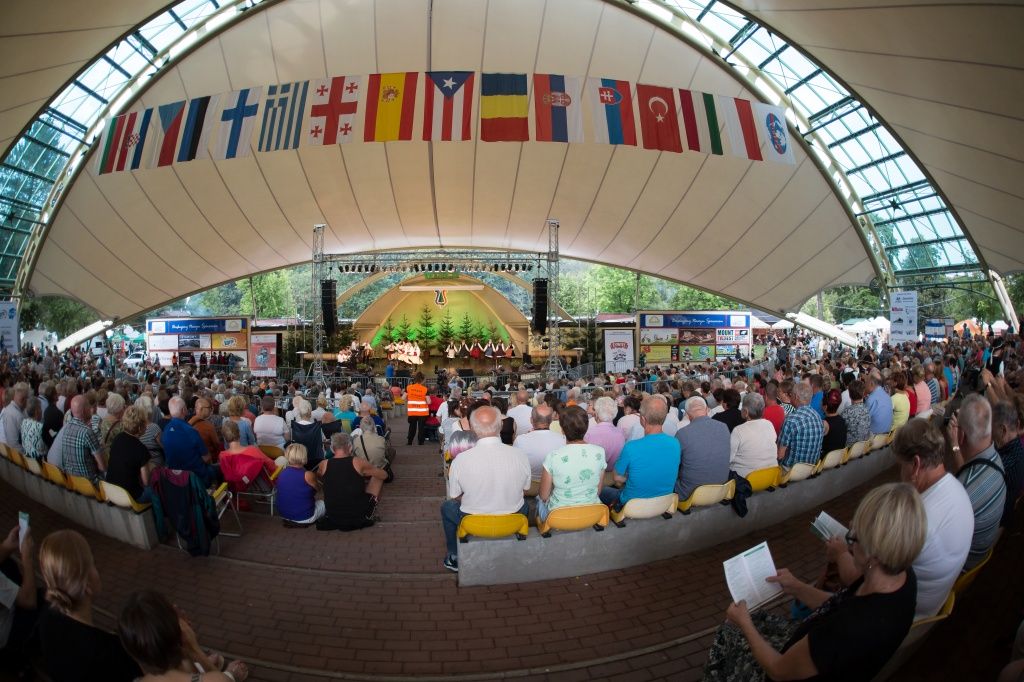

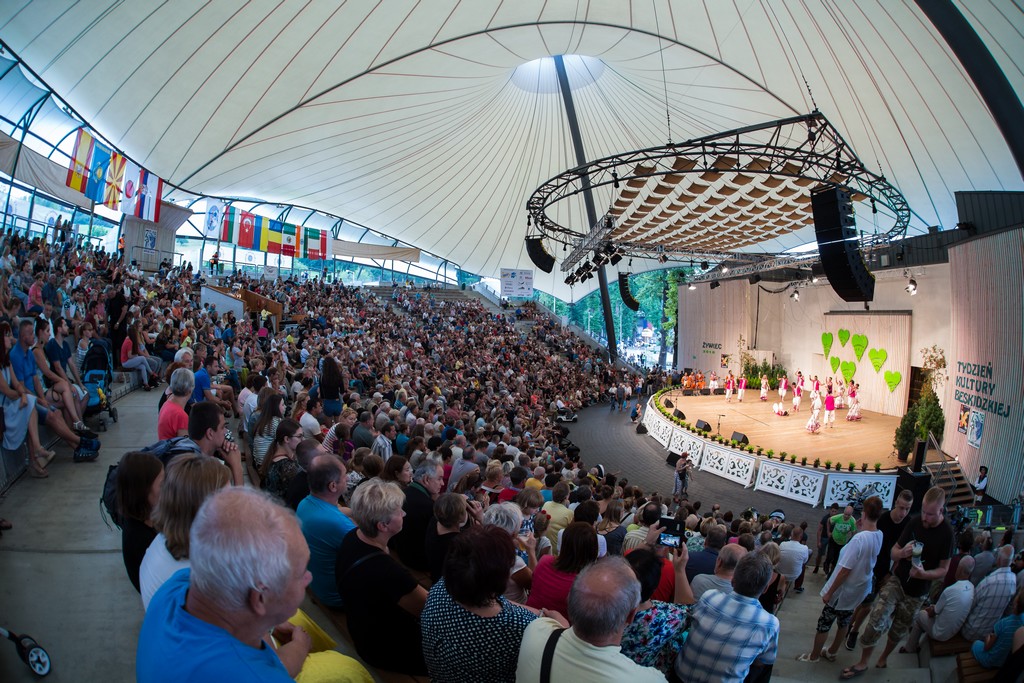
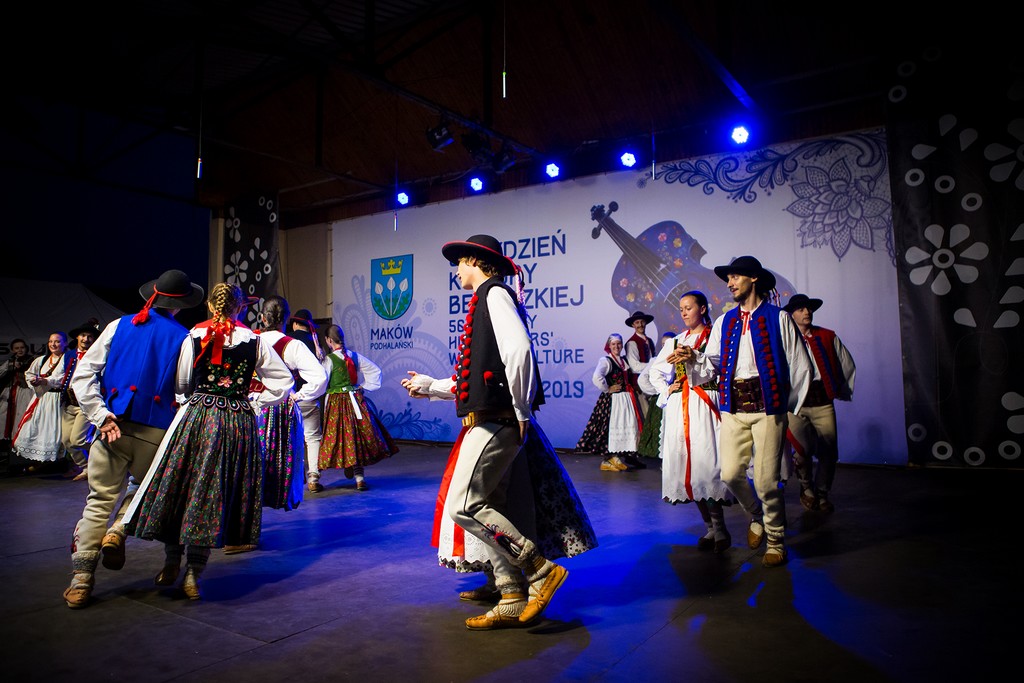
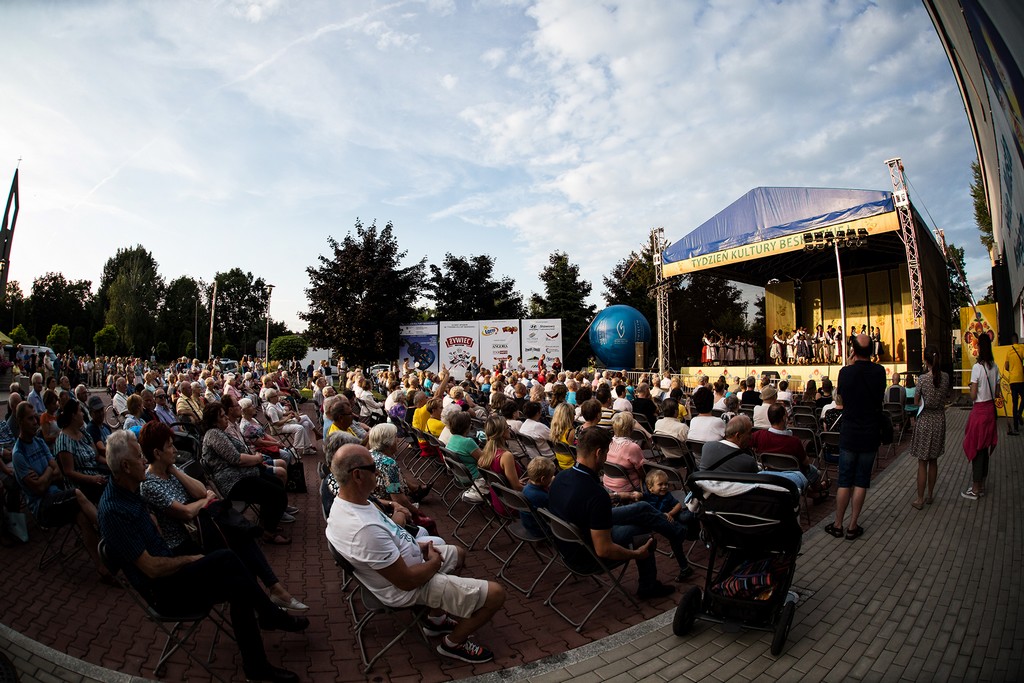
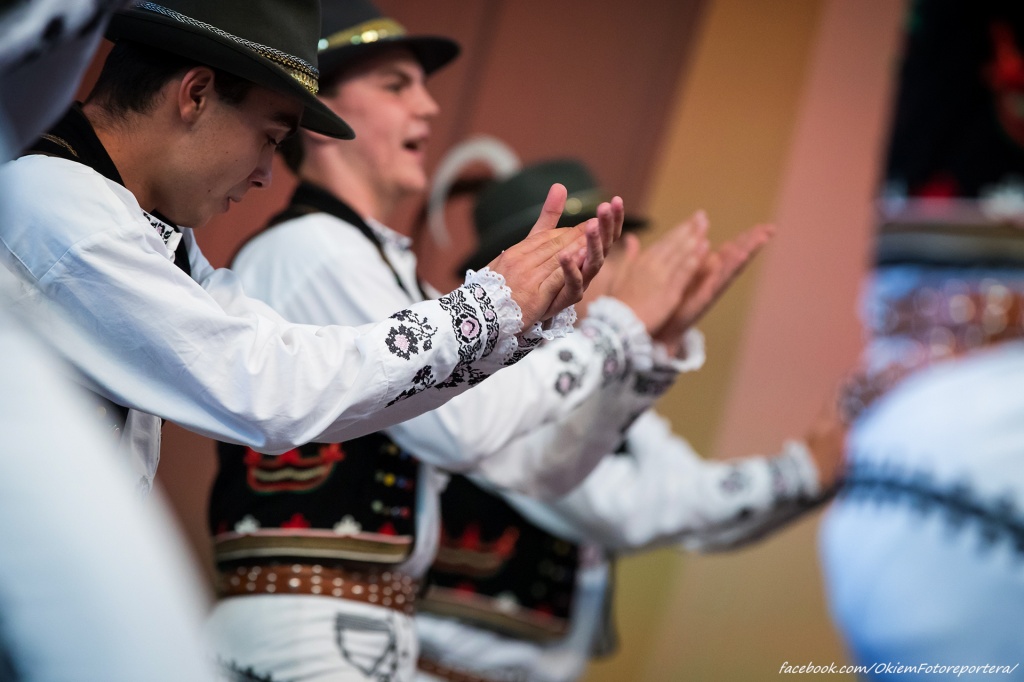
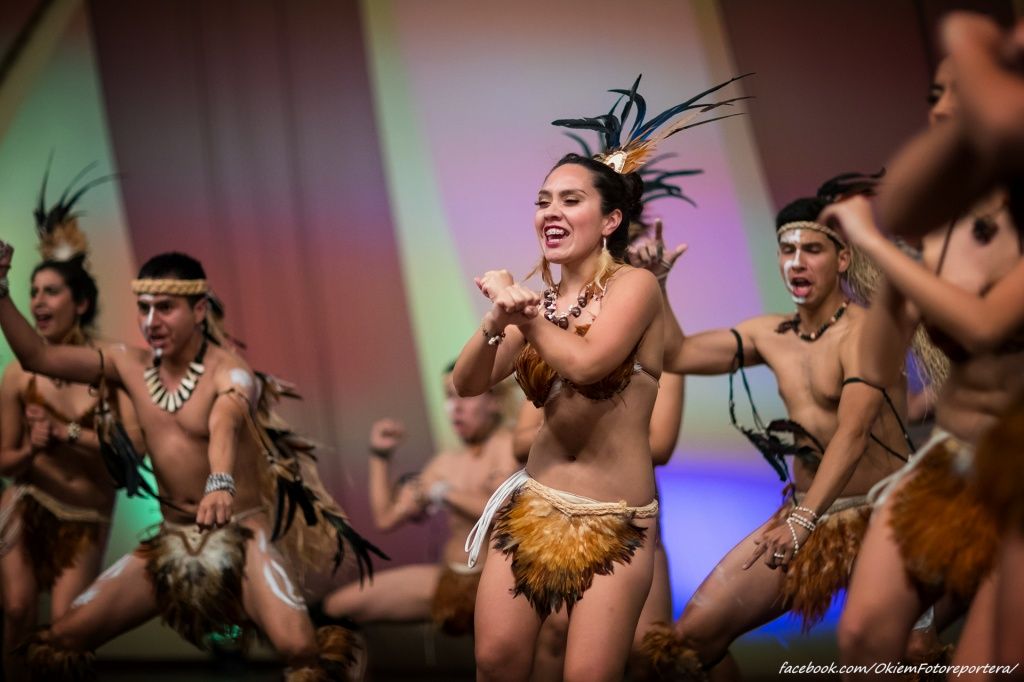

 English language
English language
